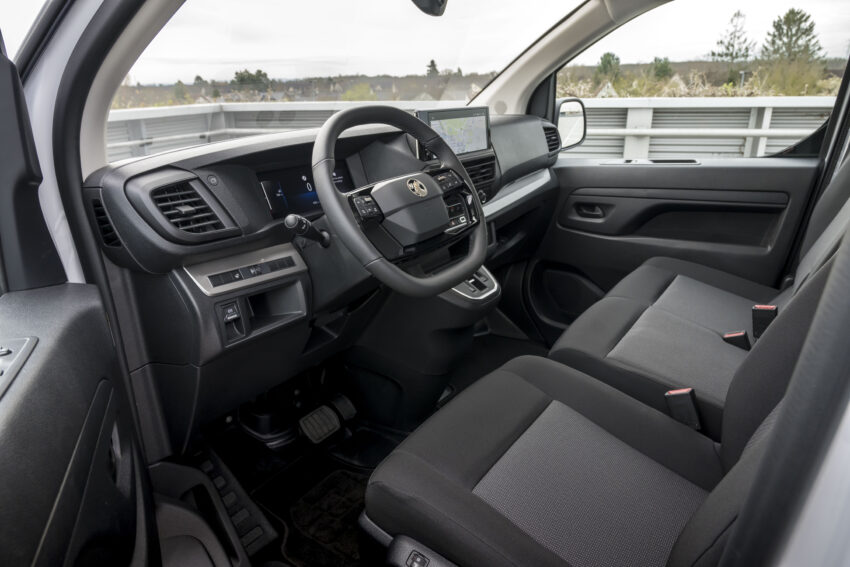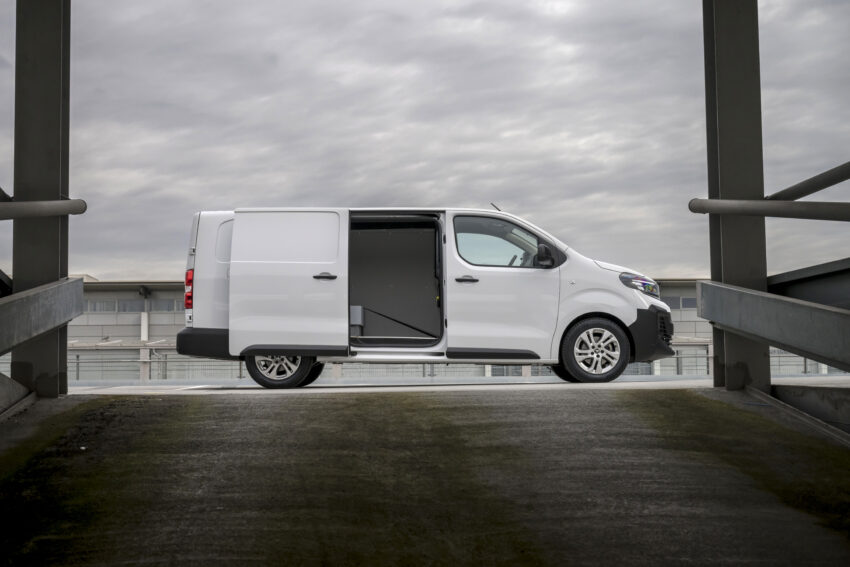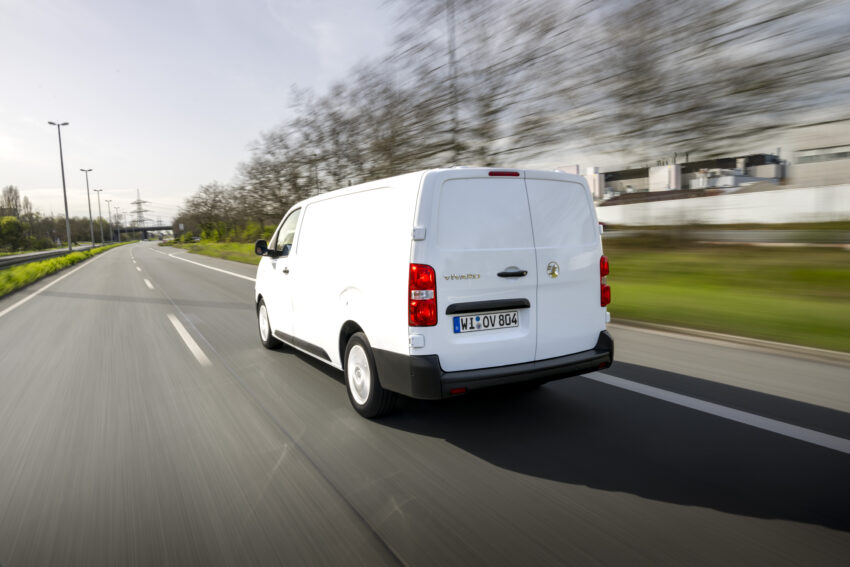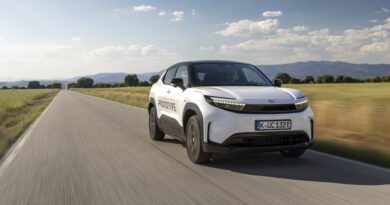
2024 Vauxhall Vivaro Electric review: Upgrades keep 1-tonne van competitive
The Vivaro has been around, even in electric form, for quite a while, so does a refresh keep it competitive against the likes of the Ford E-Transit Custom and Renault Trafic E-Tech?
It’s not often that a new van is launched, and this isn’t one of those times. What looks like a new Vauxhall Vivaro Electric is an impressively thorough facelift — at least on the outside. It comes at the same time as facelifts for the Citroen Dispatch. Fiat Scudo and Peugeot Expert, which gives a strong hint as to where this van comes from.
The quartet of vans are all borne of Stellantis, the manufacturing behemoth that also owns the likes of Alfa Romeo, Maserati, Opel, DS, Jeep and many, many others.
The Vivaro is Stellantis’ biggest-selling van in the UK, and the second most popular medium-sized van in the country, behind the dominant Ford Transit Custom, which has just gone electric. It’s also facing stiff competition from Maxus, Mercedes-Benz, Nissan, Renault, Toyota and Volkswagen, as well as its stablemates, so the latest update needs to be good. Let’s find out…
Design, interior and technology
Changes are most obvious on the outside, where the Vivaro has adopted the ‘vizor’ grille that’s seen across the brand’s road cars. The gloss-black panel sits above a reworked bumper, giving the now eight-year-old van a surprisingly fresh face.
The changes continue inside, where the rather dated and staid dashboard gets more than a lick of paint. It’s now modern, if still rather unexciting, with a 10-inch infotainment screen dominating the centre of the dashboard.
There’s another 10-inch screen, this time acting as a digital instrument panel in front of the driver, which can be configured to show important and unimportant information, depending on your wont. You’ll need the higher-spec Pro model for built-in navigation, but all models have all the connectivity you’ll need, with Android Auto and Apple CarPlay giving you access to smartphone-based nav on the big screen.

A USB socket is positioned near a small tray that’s now large enough to hold your phone securely. We never thought we’d get excited about a small tray, but the outgoing model’s infuriatingly small setup led to broken phones and lots of swearing, so excuse our delight.
Opting for the Pro model also gives you Dynamic Surround View, a windscreen-mounted digital rearview mirror showing a video feed of what’s behind you. That’s not groundbreaking, but it can be shown alongside a smaller display with a live image down the van’s flank. It’s excellent for covering blind spots on the motorway, but the angles make it tricky to work with in tight urban areas.
It’s all pleasant enough until you start driving. Then you’ll spot the offset driving option that sees the pedals to one side of centre and the steering wheel to the other, leading to a slight but constant twist in the back. It might have a six-way adjustable seat, lumbar adjustment, an armrest and a steering wheel that adjusts for reach and rake, but you’ll never get it just right. For what is otherwise a mostly excellent van, it’s frustrating.
Battery, motor and performance
Vauxhall has dropped the small 50kWh battery pack, which might be a shame for a small niche of users but is good news for everybody else. The larger 75kWh pack (68kWh usable) provides enough energy to keep the Vivaro Electric going for 194–230 miles, according to WLTP testing and depending on the van’s specification.
Our time with the van, in mixed conditions and a load of around 250kg in the back, saw it returning 2.4 miles per kWh, translating to a range of around 163 miles. Not bad, considering my rather heavy right foot, but not great either.
As with all electric vans, there’s a strong surge of power initially, but it then fades away. Push hard, and the Vivaro Electric will hit 62mph from a standstill in 14.3 seconds, but urban performance feels much stronger. Of course, put a tonne in the back, and it’ll feel more lethargic.
The performance comes from the same 134bhp electric motor fitted to vehicles across the Stellantis range, from the Peugeot 208 to the Vauxhall Mokka, giving 192lb ft of torque.
It also uses the same chassis as many of the Stellantis cars, albeit extended and strengthened accordingly. That gives the Vivaro Electric an advantage on the road, where it handles nicely, with a surprising amount of feel through the steering wheel. Body roll is, of course, present, but it’s kept well in check, especially given the low centre of gravity thanks to that large battery pack.
When the batteries need topping up, they can take power at 100kW, giving the van a 45-minute charging time to go from nearly empty (5%) to mostly full (80%).
Payload and practicality
Nothing changes behind the driver with this update, so the Vivaro Electric still has a relatively small cargo area with a relatively large payload limit. Every model, whether short or long wheelbase, can carry over a tonne of cargo. Or 1,001kg, to be precise. That used to be class-leading but the new Ford E-Transit Custom has it beaten and the Renault Trafic E-Tech is set to do the same.
If volume is more important, the Vivaro Electric doesn’t do well there. It’s the smallest of the medium-sized eLCVs, with the L1 models offering 5.3m3 while the longer L2 models give up to 6.1m3. You can slide a load of up to 2,512mm long (or 2,862mm for the longer XL models) into the back, with a maximum width of 1,636mm and height of 1,397mm. Again, both the E-Transit Custom and Trafic E-Tech will beat those figures.

Some vans go even further, with high roof options, which is something Vauxhall doesn’t offer. The downside is that it limits your load area, but the flip side is that the van will fit into almost any multi-storey car park, height-restricted area, or even a garage at home.
While the Ford gets a single sliding door on the passenger side, Vauxhall helpfully fit a door to both sides, making access easy, with a barn door style opening at the rear.
Price and specification
Entry to the Vivaro Electric panel van range starts at 42,055 plus VAT and OTR costs, making it among the cheapest electric vans of its size. Upgrading to the XL model to extend the load box adds just £800, which is good value. It undercuts the Ford E-Transit Custom and pretty much everything else on the market, including disruptors such as Maxus, with its eDeliver 7.
Entry-level models are well equipped, too, with a large infotainment system and connectivity standard across the range. The Prime model also has air conditioning, cruise control, under-seat storage, rear parking sensors, automatic lights and wipers, and a load of safety tech.
Stepping up to the Pro model adds £2,675 to the price tag, but it also includes navigation, a fold-flat middle seat, a load-through bulkhead that allows you to safely slide long, thin objects into the cabin, the flash Dynamic Surround View camera, and a host of extra safety gear. For those with an image to project, there are also body-coloured bumpers and side mouldings.
While that’s good value in the eLCV world, it’s also £15,000 more than an equivalent diesel-powered model. Running costs are significantly lower, but you’ll need to cover a lot of miles before you start to make that money back.
That price difference is reflected in leasing deals, which are often around £200 a month more for the electric model over the diesel, but that can be balanced with significant savings on fuel and taxes.
For flexibility, Vauxhall also offers the Vivaro Electric in double-cab and chassis cab variants.
Verdict
Six months ago, this would have been a class-leading van, but the industry is moving forward at such a pace that the Vivaro Electric has been relegated to best of the rest behind the Ford E-Transit Custom. It might drop further behind once we try the new Renault Trafic E-Tech.
That’s not to say it’s a bad van. It has flaws — the driving position, for one — and other vans will carry more physical goods, but the Vivaro is far from disgraced.
With some punchy finance deals from Vauxhall on a cost price that’s already lower than its competitors, it could still make a lot of sense for your business.

Vauxhall Vivaro Electric Pro L1H1
Price: £44,730 plus VAT and OTR
Powertrain: front-motor, front-wheel-drive
Battery: 68kWh usable
Power: 134bhp
Torque: 192lb ft
Top speed: 81mph
0-62mph: 14.3 seconds
Range: 194–230 miles
Consumption: 2.3-2.7m/kWh
Charging: up to 100kW





